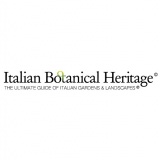
 Italian Botanical Heritage
Italian Botanical Heritage
Italian gardens and parks: Gallipoli Cognato Park
- WTI Magazine #179 Sep 21, 2024
-

 Italian Botanical Heritage
Italian Botanical Heritage
The Gallipoli Cognato Lucanian Dolomites Park covers 27,027 hectares (66,785 acres) in the municipalities of Accettura, Calciano, Oliveto Lucano in the province of Matera, and Castelmezzano and Pietrapertosa in the province of Potenza. The Park encloses and protects a large area in the center of Basilicata that has important natural, historical and ethno-anthropological values.
There is also a rich presence of watercourses in the form of seasonal streams and springs. The Park is a precious treasure chest of biodiversity for the richness of species sometimes unique both in terms of flora and fauna.
The elements of interest that characterize the park are:
- The Forest of Gallipoli Cognato that covers over 4,200 hectares (10,378 acres), a large green spot formed by various species of trees and shrubs among which there are tall oaks (Quercus cerris), which in higher areas reach enormous dimensions. Other secondary species are hornbeam (Carpinus betulus), maples and carpinelle (Ostrya carpinifolia).
- The Small Lucanian Dolomites, whose highest peak Mount Impiso reaches 1,319 meters (0.86 miles), and its bizarre profiles sculpt the suggestive landscape of Castelmezzano and Pietrapertosa.
- The Caperrino Mountain (1,400 meters, o.87 miles), which is the most harmonic backbone of the mountain range.
- The Montepiano Forest, which consists of majestic and secular pieces of oak, maple and also prosperous hornbeam and holly used during the celebration of May
- The Archaeological site of Monte Croccia, with the remains of the fortification work of the city built in the fourth century BC
Flora
The Park of Gallipoli Cognato provides a rare show of vegetation: trees, flowers and unique species in the wild. The mantle of vegetation is diversified depending on altitude, exposure and humidity, with the presence of oak (Quercus cerris) as the more widespread arboreal exemplary. In quotas between 800 and 1,000 meters (0.5 and 0.62 miles) above sea level we can find specimens of wild apple (Malus sylvaticum), field maple (Acer campestre), maple fig (Acer obtusatum) that, in the fall, create large red spots.
In Bosco Montepiano, near Accettura, they are columnar oaks and two different arboreal layers: the first, dominant, consisting of oaks (Quercus cerris and Quercus petraea), dominates the second of maple, hornbeam and limes. At the highest altitudes we also meet hornbeam (Carpinus betulus) and Holly (Ilex aquifolium). At this altitude, the vegetation becomes dense and sometimes impenetrable with trees often covered with mighty ivy stems.
Near the Dolomites of Lucania, close to Pietrapertosa, chestnut woods appear; important are the Onosma Lucana, exclusive endemic species, and Linaria Dalmatic with yellow flowers: the cliffs of Pietrapertosa are one of the rare areas of its currently known presence in Italy.
In the areas where the vegetation is more regular and less dense, woods have many plants such as ferns, cyclamen, white and blue anemones; in the clearings we can also find the deep yellow flowers zafferanastro (Sternbergia lutea) and the Knautia Lucana, another endemic species exclusive in the area.
Along the slopes of Mount Caperrino, covered with turkey oak and pastures, in spring we can observe large blooms of orchids, anemones and buttercups. The many trails in the Park will allow you to live an unaffected nature, never without surprises.